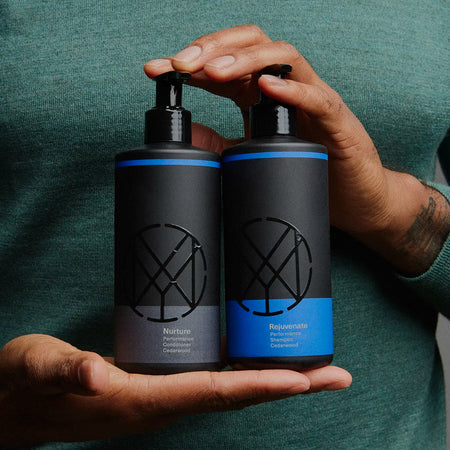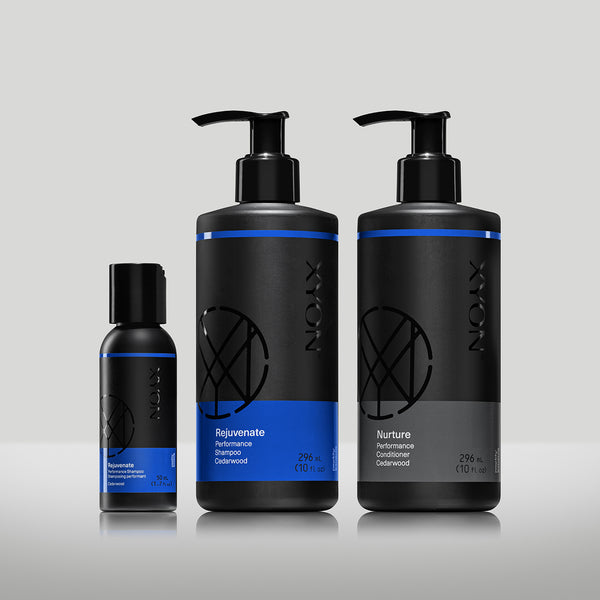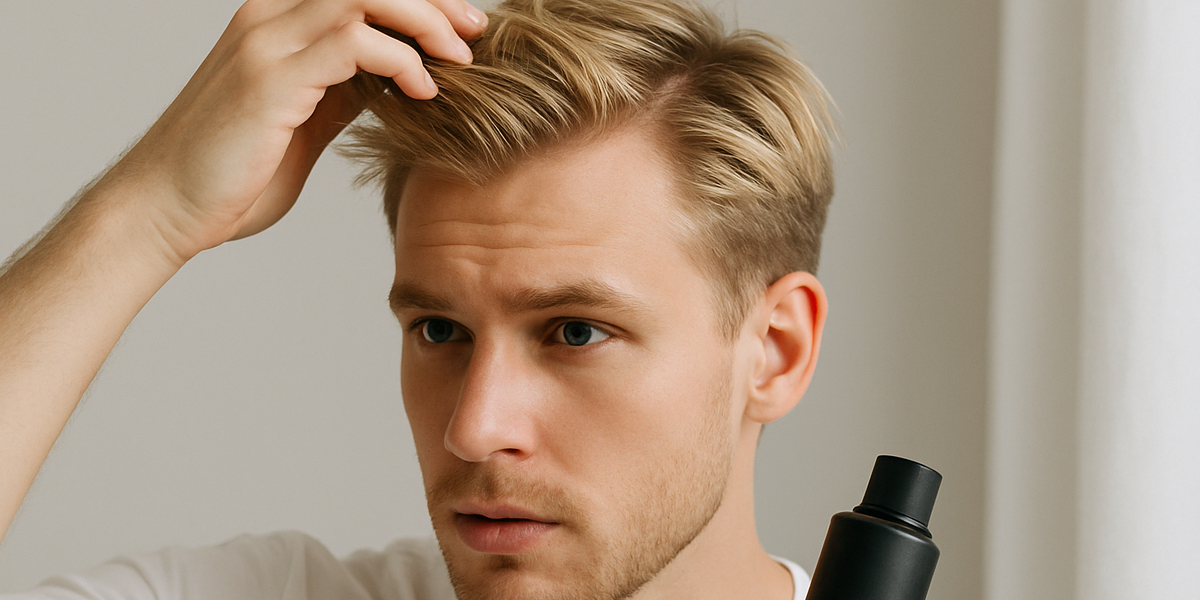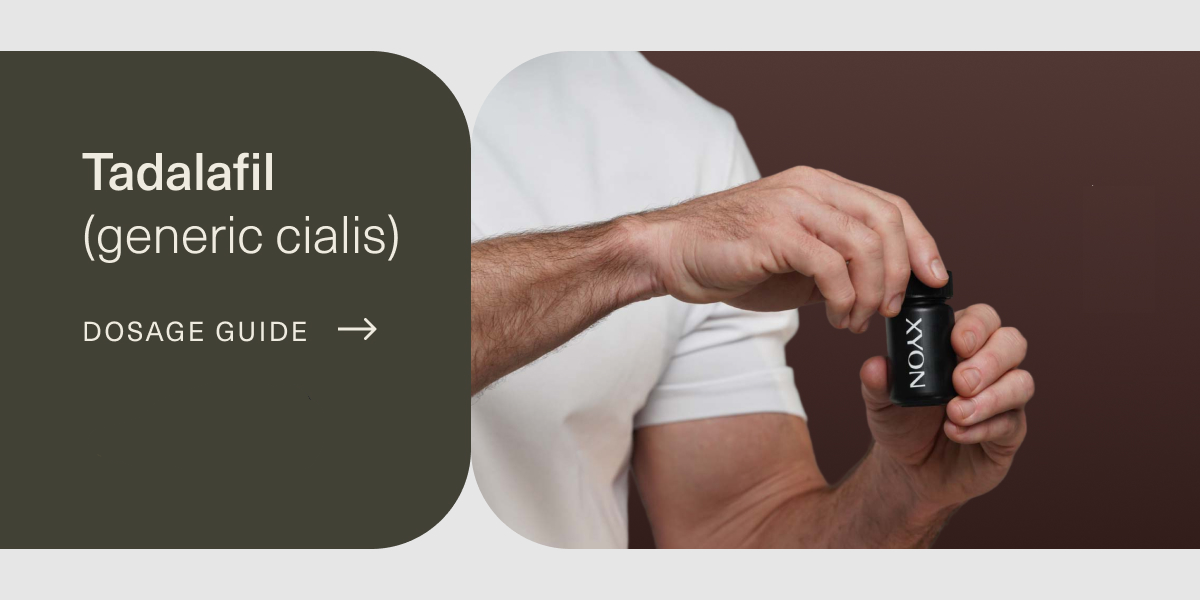Building a haircare routine that really works starts with understanding your hair and scalp needs. What works for one man might not work for the next, so instead of giving you a general list of tips filled with ambiguous claims and product placements, we asked board-certified dermatologist and Medical Director, Dr. Christina Han, to help cut through the noise. Here are her practical tips for creating a streamlined and scientifically backed hair care routine that actually works.
Tip #1: Find a system that works for you
If your daily schedule doesn’t have room for you to spend more than 10 minutes a day on your hair, there’s no reason to add extra steps or products. Similarly, if you don’t already wash your hair every day, there’s no reason to start doing so if your hair and scalp don’t need it. The best hair routine is one that fits your lifestyle.
How frequently should you shampoo your hair? This depends on your scalp. If you find that your scalp gets oily quickly, you’re exercising regularly and sweating, or using styling products daily, you may want to consider more frequent washing. This is just as much about ensuring your hair looks and smells great as it is about keeping the scalp clean. Excess build-up of oil, sweat and products can create problems for scalp health by encouraging the growth of bacteria and causing scalp irritation. In the short term, these issues won’t necessarily damage your hair but could start to affect hair growth in the long term or contribute towards the development of scalp skin disorders such as dandruff.
Tip #2: Pick the right products
You don’t have to buy the most expensive products to have great hair, but the ones you do choose to use have to work. Tempted by a 2-in-1 product? You may want to reconsider. A 2-in-1 shampoo and conditioner can shorten your routine, but these two products have opposing functions that can make the sum of their parts less effective. Shampoos are designed to cleanse the scalp and hair, while conditioners typically add back moisturizing ingredients and increase hair’s manageability (usually in the form of beneficial oils). Doing both things in the same step might mean your hair and scalp don’t get as clean as they should be, and you need to wash your hair more frequently as a result. That said, some men have hair and scalp skin that can tolerate 2-in-1 products, and if that’s your preference, keep it up. Multi-tasking products can be a gamechanger, but they need to serve the functions they’re designed for.


XYON Hair Care Products
Our DHT blocking shampoo and conditioner are developed by doctors to use natural ingredients to help properly clean your scalp and hair.
Tip #3: Opt for quality ingredients that target your areas concern
Having a separate shampoo and conditioner can also offer more flexibility in terms of formulas or specific ingredients that address your needs. For example, if scalp dryness is an issue, you may want to steer clear of shampoos that contain sodium lauryl sulfate (SLS), a foaming ingredient that can aggravate dryer skin. If you have curly hair, you could consider using products designed to enhance your hair’s structure, such as oils and polymers that interact with the hair cuticle to control frizz. If you’re concerned about thinning hair, you may want to opt for products that contain ingredients like saw palmetto or caffeine. Realistically, a product like shampoo doesn’t stay in contact with the hair or scalp for long enough to have a significant effect on hair and scalp health, but this is where layering products comes in. By including some products such as a serum that does stay on the scalp, you may be able to maximize the potential benefits of certain ingredients.
Tip #4: Stick to a consistent routine
Like many things, the real benefit of a practice or routine doesn’t become obvious until you’ve been doing it for a while. This tip is less about staying loyal to specific products (if you find something you love and works for you, stick with it) but more about cultivating a hair care routine that targets the issues that matter to you and is focused on the long-term health of your hair and scalp. Here are a few more quick-fire tips to help shape your routine:
-
-
Consider whether you need to use conditioner
If you have an oily scalp or hair that tends to get greasy quickly, you may be able to get away with just a gentle shampoo that cleanses without stripping the hair and scalp.
-
Air dry hair instead of using heat
Limit the use of blow-dryers and heated styling tools if possible. Studies have shown that at temperatures above 140 degrees Celsius, changes in hair structure due to water loss and bond breaking are likely irreversible. Air drying allows moisture to leave the cuticle naturally at a rate that doesn’t permanently affect the integrity of hair.
-
Avoid vigorously rubbing to dry your hair and choose a soft towel
Even those with short hair can benefit from a gentler approach to drying. Rubbing a towel through wet hair (and using a rough towel) can raise the cuticles of the hair shaft and increase the risk of frizz and breakage, not to mention leaving hair looking less shiny. The best approach is to squeeze or gently pat dry and add additional volume and texture with a styling product as needed.
-
Avoid wearing hats with wet hair
In addition to wet hair being more fragile and prone to breaking, we generally don’t recommend wearing a hat with wet or damp hair. Excess moisture can get trapped against the scalp, which can create conditions ideal for microbial growth.
-
Wash hats regularly for scalp and hair health
Building on the tip above, you need to wash your hats on a regular basis, regardless of what material they’re made of. Fabric tends to absorb oil, sweat and grime and over time, can harbor bacteria and other microorganisms. Scalp hygiene is an often overlooked part of hair health and taking steps to ensure that the things that touch your scalp (this includes pillowcases!) are clean can go a long way to keep itching, inflammation and other issues at bay.
-
Consider whether you need to use conditioner
Building an effective haircare routine: takeaway
Taking care of your hair and scalp is an easy and practical way to practice self-care. Along with helping you look your best, many of the haircare practices and suggestions discussed here may also have positive long-term impacts on your hair and scalp health. Building an effective haircare routine depends on several factors, including your time commitment, experimenting with different products and ultimately, understanding what your individual hair and scalp needs are. Instead of being prescriptive about what you should be doing or using, we’re encouraging a more personalized approach to hair care that’s pared down to include only what’s essential. Our general advice is to focus on maintaining scalp health and a scalp environment that supports healthy hair growth and choosing products that show off what you have.




